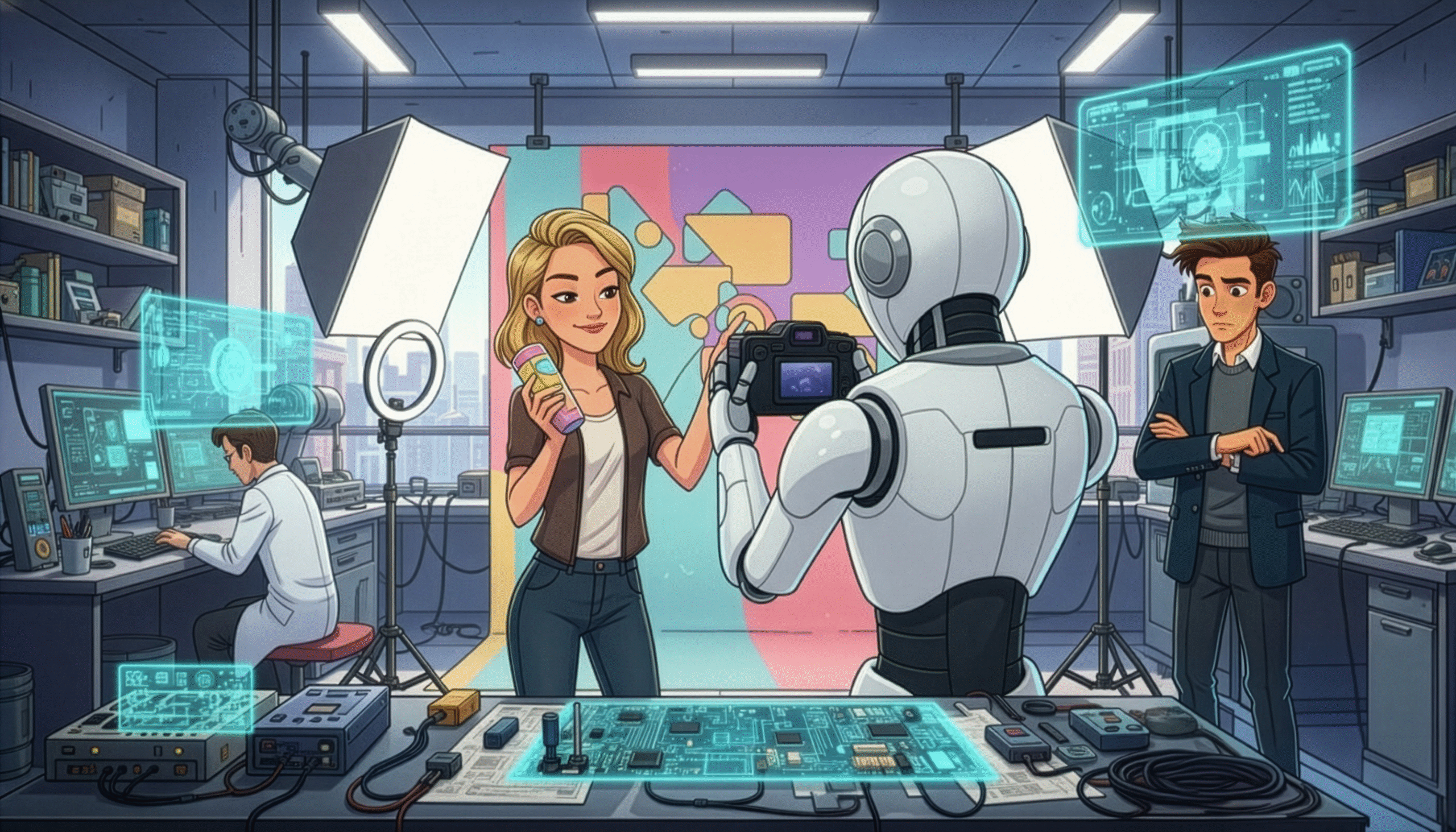Artificial Intelligence has been heralded as a game-changing tool for marketers that may one day replace us. Whether that will happen remains to be seen. For now, at MDRNai we’re more interested in how these tools can help us bring ideas to life faster, better, and cheaper.
And at the heart of so much marketing work? The 30-second ad.
I decided to run a quick experiment: using AI tools, could I create a complete 30-second commercial in under 30 minutes? Here’s what I came up with.
First Impressions: The Limits of AI Video
We’ve come a long way with AI-generated video, voice, and music. While not perfect, the character in my test ad looks remarkably lifelike compared to what would have been possible even a few months ago.
But here’s the challenge: the uncanny valley. That’s the term used to describe the unease we feel when something looks almost—but not quite—human.
In my video, some shots look convincingly real. Others have tell-tale signs of being artificially generated:
Too-perfect, hyper-smooth skin
Odd background artifacts
Extra fingers or distorted objects
Subtle lip-sync issues
It’s a rollercoaster of “wow, that looks real” followed by “oh, that looks fake.” And once you start spotting flaws, you can’t stop looking for them.
Still, the technology is improving fast, and I plan to experiment more with reference images, prompting, and different models to push the quality further.
The Tools & Workflow
There are many ways to generate AI video, but I kept things simple for this experiment. My workflow:
Script
I wrote a short script manually (though ChatGPT could easily generate one).
Character Creation
Used Google’s Nano Banana to design a consistent character across multiple outfits and settings.
Voice Generation
Leveraged ElevenLabs to turn my script into natural-sounding voiceover.
Image-to-Video Conversion
Fed reference images into Wan 2.2 (via Higgsfield) to generate short video clips.
Sound Effects & Music
Used a mix of ElevenLabs and Higgsfield’s audio tools.
Editing
Brought everything together in Final Cut Pro. While AI editing tools exist, I wanted speed and control for this test.
Building the Commercial
Reference Images as Storyboards
Using Nano Banana, I generated a single character image, then reimagined her in multiple outfits and poses to serve as my “storyboard.”
Generating the Voice & Music
In ElevenLabs, I converted my script into an audio track. I also used it to create background music, layering sound elements for a professional touch.
Creating the Video Clips
With images and audio in hand, I used Higgsfield’s Wan 2.2 model to generate clips (max length: 10 seconds). Most were 10 seconds, with a few shorter for variety.
I also tested having the model generate speech directly from the script—but the quality wasn’t as strong as ElevenLabs. To fix this, I used Higgsfield’s lip-sync model to align my ElevenLabs audio with the video footage. This produced more natural results.
Editing the Final Cut
Once I had my clips, I stitched them together in Final Cut Pro. The process felt surprisingly similar to traditional editing—just with AI-created source material.
What This Means for Marketers
This experiment highlights both the potential and the limits of AI in advertising today:
Speed: Producing a full ad in 30 minutes would have been unthinkable without AI.
Quality: While impressive, AI video still suffers from the uncanny valley and small glitches that break immersion.
Flexibility: Tools like Nano Banana and ElevenLabs let marketers quickly test different creative concepts without big budgets.
We’re not at the point where AI ads can fully replace human-crafted production. But as the tech matures, marketers who learn how to integrate AI into their creative process will have a massive advantage.
Summary & Next Steps
So—can AI make a 30-second ad in 30 minutes? Yes. Is it perfect? Not yet.
I’ll be continuing to experiment with:
More advanced prompting strategies
Additional video models
Full AI video editing workflows
Scaling this approach to create variations of ads quickly
The bottom line: AI is moving fast, and marketers who keep experimenting will stay ahead of the curve.

